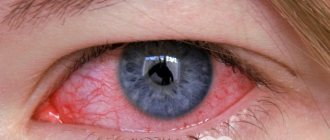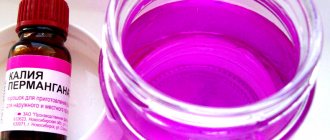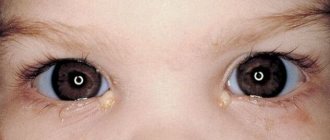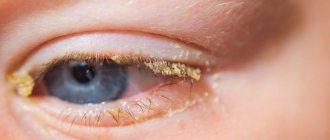Conjunctivitis (sometimes misspelled conjunctivitis) is an inflammatory disease of the conjunctiva, the thin transparent tissue lining the inner surface of the eyelid and the visible part of the sclera, which has an infectious or other etiology.
The inflammation causes the small blood vessels of the conjunctiva to become more visible and the white color of the sclera to take on a pink or red tint, which is why the condition is often called “pink eye.” Some forms of this disease can be highly contagious and spread easily. Although infectious conjunctivitis is not usually considered a complex eye disease, it can sometimes lead to more serious consequences.
The most common causes of illness are viruses, bacteria and allergens. But there are other factors that cause this disease, including chemicals, fungi, certain diseases, and the use of contact lenses (especially extended wear). Irritation of the conjunctiva can also occur when foreign bodies enter the eye, upon contact with air contaminated, for example, with chemical vapors, gases, smoke or dust, both indoors and outdoors.
What it is?
Conjunctivitis is the most common eye disease - it accounts for about 30% of all eye pathologies.
The frequency of inflammatory lesions of the conjunctiva is associated with its high reactivity to various exogenous and endogenous factors, as well as the accessibility of the conjunctival cavity to adverse external influences. The term “conjunctivitis” in ophthalmology unites etiologically heterogeneous diseases that occur with inflammatory changes in the eye mucosa. The course of conjunctivitis can be complicated by blepharitis, keratitis, dry eye syndrome, entropion, scarring of the eyelids and cornea, corneal perforation, hypopyon, decreased visual acuity, etc.
The conjunctiva performs a protective function and, due to its anatomical position, is constantly in contact with many external irritants - dust particles, air, microbial agents, chemical and temperature influences, bright light, etc. Normally, the conjunctiva has a smooth, moist surface and pink color; it is transparent, vessels and meibomian glands are visible through it; The conjunctival secretion resembles a tear. With conjunctivitis, the mucous membrane becomes cloudy, rough, and scars may form on it.
Causes
Factors contributing to the occurrence of inflammatory processes in conjunctivitis are:
- violation of basic hygiene rules (bringing in dirt with hands);
- being in the cold;
- excessive strain on the eyes, leading to fatigue;
- lack of vitamins in the body;
- ophthalmological pathologies (visual impairment);
- unfavorable working conditions (dust, smoke in the premises, insufficient ventilation).
Classification
There are several classifications of this disease, which are based on different symptoms.
Depending on the presence or absence of damage to other structures of the eye, the following forms are distinguished:
- blepharoconjunctivitis - inflammation of both the conjunctiva and eyelids at the same time;
- keratoconjunctivitis - a combination of inflammation of the conjunctiva with inflammation of the cornea;
- episcleritis is a condition in which almost the same tissue damage occurs as with conjunctivitis, but lacrimation and discharge from the eyes are not observed.
Depending on how severe the symptoms of the disease are and how quickly they develop, there are:
- acute conjunctivitis – the disease is pronounced and causes a lot of inconvenience to the patient, reducing the quality of life;
- chronic conjunctivitis – the symptoms of the disease are somewhat erased, but bother the patient for a long time;
- subacute conjunctivitis is a form that clinically occupies a transitional position between the two mentioned above;
- recurrent - the disease periodically affects the patient's eyes, often around the same time of year.
Morphological classification
During its course, the disease can cause changes of a different nature. Based on what can be observed in the affected eye, several morphological forms of the disease are distinguished.
- Catarrhal - the main symptom of the disease is lacrimation due to increased secretion of tear fluid from the conjunctival glands. The body thus tries to cope with the disease and eliminate its cause by cleansing the conjunctival sac by rinsing.
- Papillary conjunctivitis - in most cases occurs in response to irritation of the delicate conjunctiva by contact lenses when they are worn incorrectly or if the patient is allergic to the material from which the lens is made. The emerging papillae adversely affect the surface of the eyeball, rubbing and irritating the cornea, which can cause the development of keratitis and aggravate the patient's condition.
- Follicular conjunctivitis is a form of the disease in which some loosening of the conjunctiva occurs. Small rounded elevations with a diameter of about 1-2 millimeters are formed on it. Follicles are a collection of lymphocytes - one of the fractions of leukocytes that the body sends to the inflammatory focus to fight the causative agent of the disease. Regardless of what pathogen caused the disease (with the exception of trachoma), the follicles subsequently disappear without a trace when the pathology resolves.
- Hemorrhagic conjunctivitis is almost always provoked by viruses and is epidemic in nature. The disease develops rapidly, and its main manifestation is subconjunctival hemorrhage. In most cases, the disease passes as quickly as it begins, which distinguishes epidemic conjunctivitis from other forms of the disease.
- Membranous conjunctivitis - most often occurs in young children 3-4 years old when the eyes are damaged by bacteria that can provoke purulent processes. This form of the disease is often confused with diphtheria of the eye, although the causative agent of diphtheria is not found there. All this is due to the peculiarity of the clinical picture - the appearance of dense films on the conjunctiva and the surface of the eyeball, which significantly impair vision and cause additional inconvenience to the patient.
- The mixed form of the disease is characterized by the presence of features from several types of disease (hemorrhage and follicles, for example). If you carefully examine the affected tissue, you can almost always find several morphological elements.
Diagnosis of the disease
Diagnosis of viral conjunctivitis is based on the clinical picture of the disease; if necessary, enzyme-linked immunosorbent assay (ELISA), immunofluorescence analysis and cultivation of viral cultures are performed. To carry out immunofluorescence analysis, tears or blood serum are used, for express diagnostics - conjunctival scraping. To identify small infiltrates on the cornea, a staining technique is used - a fluorescein test.
Diagnosis of acute bacterial conjunctivitis is not difficult. It is based primarily on the clinical picture of the disease. The presence of microbial flora is detected by cytological examination of conjunctival scrapings and bacteriological examination of the contents of the conjunctival sac.
Differential features of acute conjunctivitis:
With viral conjunctivitis, the discharge is clear and contains mononuclear cells. Swelling of the eyelid is moderate. Lymph nodes are often enlarged. There is no itching.
In bacterial conjunctivitis, the discharge is purulent and contains polymorphonuclear leukocytes. Eyelid swelling is minimal. Lymph nodes do not enlarge. There is no itching.
In allergic conjunctivitis, the discharge from the eye is transparent, viscous, mucoid, and contains eosinophils. The swelling of the eyelids is significant. Lymph nodes do not enlarge. Itching of varying intensity - from moderate to intense.
Rice. 12. The photo shows viral conjunctivitis, severe form.
First signs
With any type of conjunctivitis, an adult develops certain symptoms, such as:
- Swelling of the eyelids;
- Swelling of the mucous membrane of the eye;
- Redness of the conjunctiva and eyelids;
- Photophobia;
- lacrimation;
- Pain in the eyes;
- Sensation of a foreign body in the eye;
- Discharge of mucous, purulent or mucopurulent nature.
The above symptoms develop with any type of conjunctivitis and are therefore called nonspecific. Quite often, the symptoms of conjunctivitis are combined with symptoms of catarrh of the upper respiratory tract due to various respiratory infections, as well as fever, headache and other signs of intoxication (muscle pain, weakness, fatigue, etc.).
Kinds
When starting treatment, the ophthalmologist always begins with a thorough determination of the specifics and form of the disease. Subsequent treatment depends on this.
There are at least three types of conjunctivitis:
- viral, caused by colds or viral infections (chickenpox, rubella, measles, mumps);
- bacterial, developing under the influence of pathogenic bacteria (staphylococci, Koch bacteria, Escherichia coli);
- allergic, which occurs under the influence of various allergens (pollen, animal hair, fine dust, low-quality cosmetics).
Specialists in the field of ophthalmology will also call conjunctivitis, which occurs as a result of eye injury (damage from chemicals, high temperature), its damage by a fungus, or as a result of the body suffering from a general disease.
Symptoms of conjunctivitis
However, in addition to nonspecific symptoms, various types of conjunctivitis (see photo) are characterized by the appearance of specific signs that are caused by the properties of the factor that causes the inflammatory process. It is the specific symptoms that make it possible to differentiate different types of conjunctivitis based on the clinical picture without special laboratory tests.
Let us consider in detail what nonspecific and specific symptoms manifest various types of conjunctivitis:
- Viral. Very often it develops in parallel with a general viral infection, herpes, for example. With viral conjunctivitis, the main symptoms are itching and lacrimation discharged from the eyes, which is non-purulent in nature; the inflammatory process quickly passes from one eye to the other. Common symptoms also include low-grade fever, runny nose and sore throat.
- Bacterial. It is usually caused by bacteria such as pneumococci, gonococci, streptococci, and staphylococcus. The distinctive signs of this disease are discharge, which has a cloudy yellow or gray color and a viscous consistency, sticking of the eyelids, especially after sleep. Also often there is damage to the skin around the eye, dryness of the conjunctiva itself. The inflammatory process can be observed in one eye or both.
- Fungal. It is formed as a result of pathogenic effects on the conjunctiva of different types of fungi. Yeast-like and mold fungi, actinomycetes get into the eyes from the soil, from unwashed fruits and vegetables, through dirty hands.
- Chlamydial. It occurs in 10-30% of all conjunctivitis and most often affects newborns who become infected from sick mothers. It often occurs without symptoms, and therefore has a chronic form. Over time, the patient experiences moderate swelling of the eyelids, hardening of the conjunctiva itself, and slight discharge from one eye.
- Allergic. With it, patients first of all complain of terrible itching in the eyes, swelling of the eyelids, and in some cases there may be pain. Often this type of conjunctivitis accompanies allergic rhinitis and bronchial asthma. The variety of symptoms depends mainly on the nature of the allergen.
- Drug. This is a common occurrence, especially in those who take a lot of medications. It develops within 6 hours after taking the medicine. The symptoms develop very quickly, accompanied by burning, itching and copious mucous discharge.
- Purulent. Its development is provoked by some representatives of gram-negative microflora (Klebsiella, Proteus, Escherichia coli and Pseudomonas aeruginosa). This conjunctivitis is the most dangerous, because as it progresses without treatment, the risk of corneal damage increases significantly. With it, patients complain of burning, swelling, redness of the eyes, and purulent viscous discharge. Next comes ocular discomfort, when a person constantly squints and the eyes become overly sensitive to light.
- Adenoviral. It is observed in parallel or immediately before damage to the upper respiratory tract. It has an acute onset, manifests with lacrimation and redness, swelling, in some cases there are pinpoint hemorrhages, there is not much discharge, small follicular rashes form on the lower conjunctival area. Conjunctivitis from one eye spreads to the other.
- Conjunctivitis as a result of contact with chemicals and toxic substances in the eyes. With it, patients complain exclusively of pain in the eyes, without the absence of other characteristic symptoms.
General symptoms
Symptoms of conjunctivitis can manifest in different ways. But all the signs have the same nature - inflammation of the eyes. Other symptoms accompany the main symptom and may include:
- purulent discharge (possibly bloody);
- tearfulness;
- unpleasant burning sensation;
- swelling of the eyelids;
- sticking of eyelids in the morning;
- decreased vision during a pathological process.
The disease affects both eyes: even in cases where symptoms of inflammation appear in one of them, they will soon be noticeable in the other. Sometimes the pathology affects them alternately, and on each side it is expressed to varying degrees.
The main sign of inflammation of the conjunctiva in a large number of cases can be considered “sticking” of the eyelids after a night or daytime sleep. If the disease occurs in the acute phase, general well-being always suffers:
- there is a loss of strength;
- headaches radiating to the upper half of the face;
- body temperature rises.
This inflammation usually lasts from 7 to 14 days. If treatment is insufficient, the disease becomes chronic.
With subacute conjunctivitis, the symptoms are less pronounced. The chronic form develops gradually, against the background of improper or irregular treatment or its complete absence. Patients complain of:
- “sand” in the eyes;
- inability to read or watch videos for a long time due to rapid visual fatigue;
- moderate redness, looseness of the eyelid mucosa.
Chronic conjunctivitis often causes inflammatory pathology of the cornea (keratitis). In severe conditions, the patient may experience headache, weakness, and possibly enlarged lymph nodes.
These were general symptoms, but some types of conjunctivitis deserve special attention.
Complications
Advanced infectious conjunctivitis caused by chlamydia can lead to deformation of the eyelids and pathology of eyelash growth.
A disease caused by another type of bacteria can be complicated by meningitis, sepsis, or otitis media. In newborn babies, eye diseases may progress after conjunctivitis. After an adenovirus infection, corneal opacities and tear film disturbances are rarely possible. The most common complication of allergic conjunctivitis is the chronic form. After repeated herpesvirus conjunctivitis, scars remain.
Infectious conjunctivitis can cause keratitis (inflammation of the cornea).
How to treat conjunctivitis
The eye can be considered healthy only when the cause of the pathology (the causative agent of the infection) is eliminated and the painful consequences are eliminated. Therefore, the treatment of inflammatory eye diseases is complex.
The treatment regimen for conjunctivitis is prescribed by an ophthalmologist, taking into account the causative agent, the severity of the process, and existing complications. Topical treatment of conjunctivitis requires frequent rinsing of the conjunctival cavity with medicinal solutions, instillation of medications, application of eye ointments, and subconjunctival injections.
1. Antiseptic drugs: Picloxidin and Albucid 20%
2. Antibacterial (etiotropic therapy):
- staphylococcus, gonococcus, chlamydia (Erythromycin ointment)
- Pseudomonas aeruginosa (Tetracycline ointment and/or Levomycetin drops)
- virus-associated conjunctivitis (systemic immunocorrective and immunostimulating treatment is used, and broad-spectrum antibacterial drugs are used locally to prevent secondary bacterial damage)
3. Anti-inflammatory drugs (either steroidal or non-steroidal origin) are used locally and systemically for edema and hyperemia: Diclofenac, Dexamethasone, Olopatodin, Suprastin, Fenistil in drops.
If acute conjunctivitis is detected, treatment consists of getting rid of the pus:
- For these purposes, a solution of furatsilin (1:500), a pale pink solution of manganese or a solution of boric acid 2% is used.
- You should rinse your eyes every 2-3 hours, then instill antibacterial drops.
- If the acute form is caused by coccal flora, the doctor prescribes oral antibiotics and sulfonamides.
If purulent conjunctivitis in adults affects one eye, both will still have to be washed and treated.
Principles of treatment at home
Treatment of conjunctivitis depends on what exactly causes the inflammation of the eye. At the same time, how to treat conjunctivitis at home in adults and children depends on the doctor’s recommendations. Treatment of eye conjunctivitis at home is carried out using instillation, rinsing, and using ointments. Your doctor will recommend how to cure conjunctivitis quickly, since using exclusively folk remedies is often ineffective. How to treat conjunctivitis depends, first of all, on its type. Therefore, it is necessary to take into account all the differences between the different types of this disease.
Bacterial
During the entire course of treatment, Diclofenac should be instilled into the eyes 2–4 times a day to reduce the severity of the inflammatory process. The discharge must be removed by washing the eye with antiseptic solutions, for example, Furacilin diluted 1: 1000 or 2% boric acid. To destroy the pathogenic microbe, ointments or drops with antibiotics or sulfonamides are used, such as Tetracycline, Gentamicin, Erythromycin, Lomefloxacin, Ciprofloxacin, Ofloxacin, Albucid, etc. Ointment or drops with antibiotics should be administered 4 - 6 times a day, then 2 - 3 times a day until the clinical symptoms completely disappear. Along with antibacterial ointments and drops, Picloxidine can be instilled into the eyes 3 times a day.
Viral
For adenoviral conjunctivitis, interferon preparations, such as Interferon or Laferon, are used to destroy the virus. Interferons are used in the form of instillation of a freshly prepared solution into the eye. In the first 2–3 days, interferons are injected into the eyes 6–8 times a day, then 4–5 times a day until the symptoms disappear completely. In addition, ointments with an antiviral effect, such as Tebrofenovaya, Florenalovaya or Bonaftonovaya, are applied 2–4 times a day. In case of severe inflammation of the eye, it is recommended to inject Diclofenac into the eye 3-4 times a day. In order to prevent dry eye syndrome, artificial tear substitutes are used throughout the course of treatment, for example, Oftagel, Systane, Vidisik, etc.
Herpes viral
In order to destroy the virus, interferon solutions are also used, which are prepared from lyophilized powder immediately before injection into the eye. For the first 2–3 days, interferon solutions are administered 6–8 times a day, then 4–5 times a day until the symptoms disappear completely. To reduce inflammation, relieve pain, itching and burning, Diclofenac is injected into the eye. To prevent bacterial complications in herpetic conjunctivitis, Picloxidine or a solution of silver nitrate is injected into the eyes 3 to 4 times a day.
Chlamydial
Since chlamydia are intracellular microorganisms, treatment of the infectious and inflammatory process provoked by them requires the use of systemic medications. Therefore, for chlamydial conjunctivitis, it is necessary to take Levofloxacin 1 tablet per day for a week.
At the same time, local medications with antibiotics, such as Erythromycin ointment or Lomefloxacin drops, should be injected into the affected eye 4 to 5 times a day. The ointment and drops must be used continuously from 3 weeks to 3 months, until the clinical symptoms completely disappear. To reduce the inflammatory reaction, Diclofenac is administered into the eye 2 times a day, also for 1 to 3 months. If Diclofenac does not help stop inflammation, then it is replaced with Dexamethasone, which is also administered 2 times a day. To prevent dry eye syndrome, it is necessary to use artificial tear preparations daily, such as Oxial, Oftagel, etc.
Allergic
For the treatment of allergic conjunctivitis, local antihistamines (Spersallerg, Allergoftal) and agents that reduce mast cell degranulation (Lecrolin 2%, Kusikrom 4%, Alomide 1%) are used. These drugs are administered into the eyes 2 times a day for a long time. If these drugs do not completely relieve the symptoms of conjunctivitis, then anti-inflammatory drops Diclofenac, Dexalox, Maxidex, etc. are added to them. For severe allergic conjunctivitis, eye drops containing corticosteroids and antibiotics are used, for example, Maxitrol, Tobradex, etc.
Purulent
In case of purulent conjunctivitis, be sure to rinse the eye with antiseptic solutions (2% boric acid, Furacilin, potassium permanganate, etc.) to remove copious discharge. Eye rinsing is done as needed. Treatment of conjunctivitis consists of injecting Erythromycin, Tetracycline or Gentamicin ointment or Lomefloxacin into the eye 2 to 3 times a day until clinical symptoms completely disappear. In case of severe swelling, Diclofenac is injected into the eye to relieve it.
Chronic
For successful treatment of chronic conjunctivitis, the cause of inflammation must be eliminated. To stop the inflammatory process, a 0.25 - 0.5% solution of zinc sulfate with a 1% solution of resorcinol is instilled into the eyes. In addition, solutions of Protargol and Collargol can be injected into the eyes 2 to 3 times a day. Before going to bed, apply yellow mercury ointment to the eyes.
Folk remedies for the treatment of conjunctivitis
Traditional medicine recipes can be used in complex treatment of the disease. Solutions for washing and treating eyes are prepared using folk remedies.
Effective folk recipes:
- Squeeze out the pulp from dill, minced through a meat grinder, using gauze. Soak a soft cotton cloth in the resulting juice and apply it to the eye for 15-20 minutes. Use when the first signs of the disease appear.
- A solution of honey and boiled water (in a ratio of 1:2) is instilled into the eye several times a day;
- Decoction of 2 tsp. rose hips and 200 ml of water, infused for 30 minutes, strain. Moisten a clean napkin or cotton pad and apply to the eye for purulent conjunctivitis.
- Pour 200 ml of boiling water over 10 g of plantain seeds crushed in a mortar, leave for 30 minutes, strain. Soak a clean napkin in the solution and make lotions. Rinse eyes if necessary.
- Make lotions from 30 g of crushed dope leaves, infused in 200 ml of boiling water for 30 minutes.
Prevention
To prevent eye pathology, it is enough to follow the recommendations below:
- Use only clean water for washing.
- Maintain hand hygiene.
- If there is a tendency to allergies, take antihistamines and avoid contact with hazardous substances as much as possible.
- When wearing lenses, strictly follow the rules for their storage and terms of use. It is important to undergo periodic examinations with an ophthalmologist to ensure timely detection of disorders.
- For preventive purposes, visit an otolaryngologist or dentist once every six months.
Glaucoma Eye keratitis: photos, symptoms and treatment Blepharitis Ophthalmoferon Increased intraocular pressure: symptoms, causes and treatment Measles in adults
How is it transmitted?
It is no secret that infectious ophthalmic diseases are contagious, therefore, under certain circumstances, the disease can easily pass from a sick person to a healthy one.
According to statistics, conjunctivitis most often occurs when:
- using someone else's glasses or not following the rules for storing and wearing contact lenses;
- using cosmetics of dubious quality;
- regular swimming in contaminated public swimming pools, lakes, rivers and other bodies of water. You can also become infected when visiting a sauna or bathhouse;
- failure to comply with personal hygiene rules;
- using hygiene products or utensils of an infected person;
- shaking hands with an infected person;
- being in the same room with an infected person.
All pathology transmission routes described above are conventionally divided into contact and airborne. If in the first case, infection occurs through household objects, water, or through direct contact with an infected person, then the second option involves transmission of the infection from an infected patient when talking, coughing or sneezing. It is worth noting that fungal and bacterial types of conjunctivitis are usually transmitted by contact with an infected person or his personal objects, but the viral type of the disease is most often transmitted by airborne droplets.
Inflamed eye











